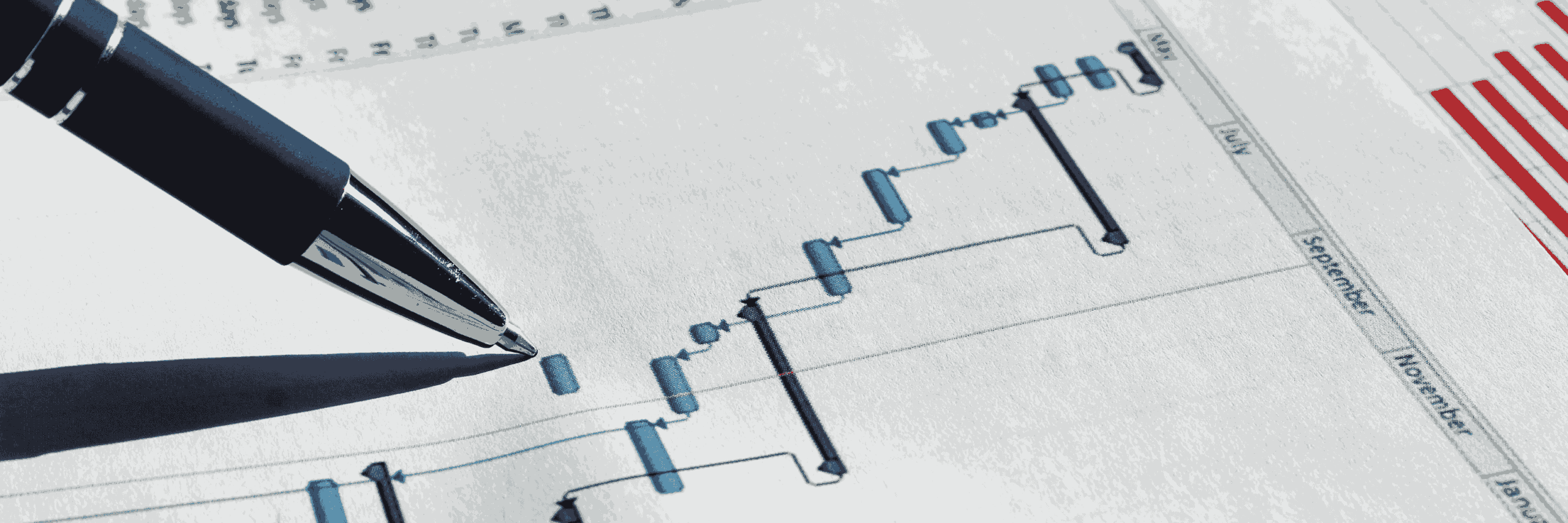Poor forecasting is rarely visible on a single line of a budget; it leaks value everywhere. Missed timelines, under- or over-staffed teams, rework, scope creep, strained client relationships, and lost bids quietly erode margins and damage your reputation. These aren’t one-off annoyances; they compound across projects and quarters, eroding profitability and trust.
What is Forecasting in Project Management
Forecasting in project management is the process of predicting how a project will progress and what its outcomes will be. By analyzing current, historical, and real-time data, project managers estimate key factors such as costs, timelines, resource needs, and risks. This allows for better planning and decision-making throughout the project lifecycle.
Effective forecasting is not a one-time event but an ongoing activity that adapts as the project unfolds. It helps identify potential problems early, so corrective actions can be taken before issues escalate. Forecasting also enhances communication and alignment among teams by providing updated insights into progress and expected results.
Types of Forecasting in Project Management
Forecasting in project management takes various forms, depending on what needs to be predicted, the project’s or organization’s maturity, and the availability of data. Broadly, there are qualitative and quantitative methods, and then there are forecast types by what you’re forecasting (cost, duration, resources, risks, etc.).
| Category | Techniques and Examples | When It’s Useful |
| Qualitative Forecasting | Expert judgment; Delphi method; scenario planning; stakeholder surveys; consensus-based estimates. | Early stages of a project, when historical quantitative data is sparse or when dealing with new types of work (e.g., innovation, R&D) |
| Quantitative Forecasting | Time series analysis; regression models; moving averages; exponential smoothing; ARIMA (Box-Jenkins); cost-benefit and break-even analyses; Earned Value Management (EVM). | Early stages of a project, when historical quantitative data is sparse or when dealing with new types of work (e.g. innovation, R&D) |
What are the Hidden Costs of Poor Forecasting
- Cost overruns: Resulting from underestimated effort and missing contingencies — force last-minute spending on labor, materials, or subcontractors.
- Schedule slip & holding costs: Every delayed milestone creates knock-on expenses (overtime, idle equipment, client penalties).
- Lost bids and missed opportunities: Inaccurate forecasting means you either bid too low (eat the loss) or too high (lose the work). Over time, this reduces the win-rate.
- Resource burnout or bench time: Poor allocation causes overwork for some and underutilization for others, increasing turnover or carrying unproductive payroll.
- Lower margins and poor cash flow: Forecasting failures distort invoicing, billing, and cash expectations, squeezing working capital.
Why Forecasting in Project Management is Hard
Forecasting isn’t just hard because people make mistakes; it’s hard because many of the inputs are uncertain, dynamic, and interconnected. Scope creep and changing requirements are almost inevitable: a project that looked clear at kickoff may evolve as clients change their minds or market conditions shift. Then there is poor or incomplete data: if you don’t have good historical data, you’ll be making guesses, which can lead to optimistic biases or overlooking past mistakes. External volatility matters too: labor costs, material costs, supply chain constraints, and regulatory changes. These external factors can shift suddenly and dramatically.
- Inaccurate Data: Reliable forecasts require accurate and timely data, but many teams rely on fragmented spreadsheets or outdated information.
- Project Scope Changes: Projects often face shifting requirements and unexpected issues that make it difficult to keep forecasts aligned with reality.
- Lack of Collaboration: Poor communication across departments leads to siloed estimates that don’t reflect the full scope of the project.
- Static Forecasting: Many organizations treat forecasts as fixed plans instead of continuously updating them to reflect current progress and risks.
- External Factors: Interruptions like supply chain delays or market fluctuations add unpredictability to the forecasting process.
Key Planning Pain Points that Follow Poor Forecasting
When forecasts are off, the planning stage is undermined in many concrete ways:
- Wrong staffing plans (hire or bench the wrong people)
- Inaccurate cost estimates for proposals and bids
- Reactive firefighting instead of proactive risk mitigation
- Weak client trust when deliverables and budgets shift
- Diminished strategic decision-making because leadership lacks a dependable view of capacity and margins
How OAE helps
OAE is built to turn estimation and forecasting from guesswork into repeatable, defensible practice. Here’s how:
- Single source of truth for estimates and forecasts. OAE centralizes labor-based estimates, proposal inputs, and project plans so your forecasts use the same data your estimators and project managers rely on — no more lost spreadsheet versions. This reduces errors and improves forecast fidelity
- Role-based collaboration & permissions. Estimators, PMs, sales, and subcontractors work in the same system with appropriate visibility, faster updates, cleaner handoffs, and fewer surprises.
- Data you can trust for future bids. With historical estimates and outcomes in one place, you can calibrate future bids, protect margins, and increase win rates instead of guessing numbers that cost you money.
- Real-time version control & auditability. Changes are tracked, so you can see who changed what and when, essential for compliance, audits, and resolving disputes.
- Industry-fit controls & compliance. For regulated sectors with strict standards (government, maritime, manufacturing), OAE supports compliance and detailed, auditable proposal estimates to reduce risk in big bids.

